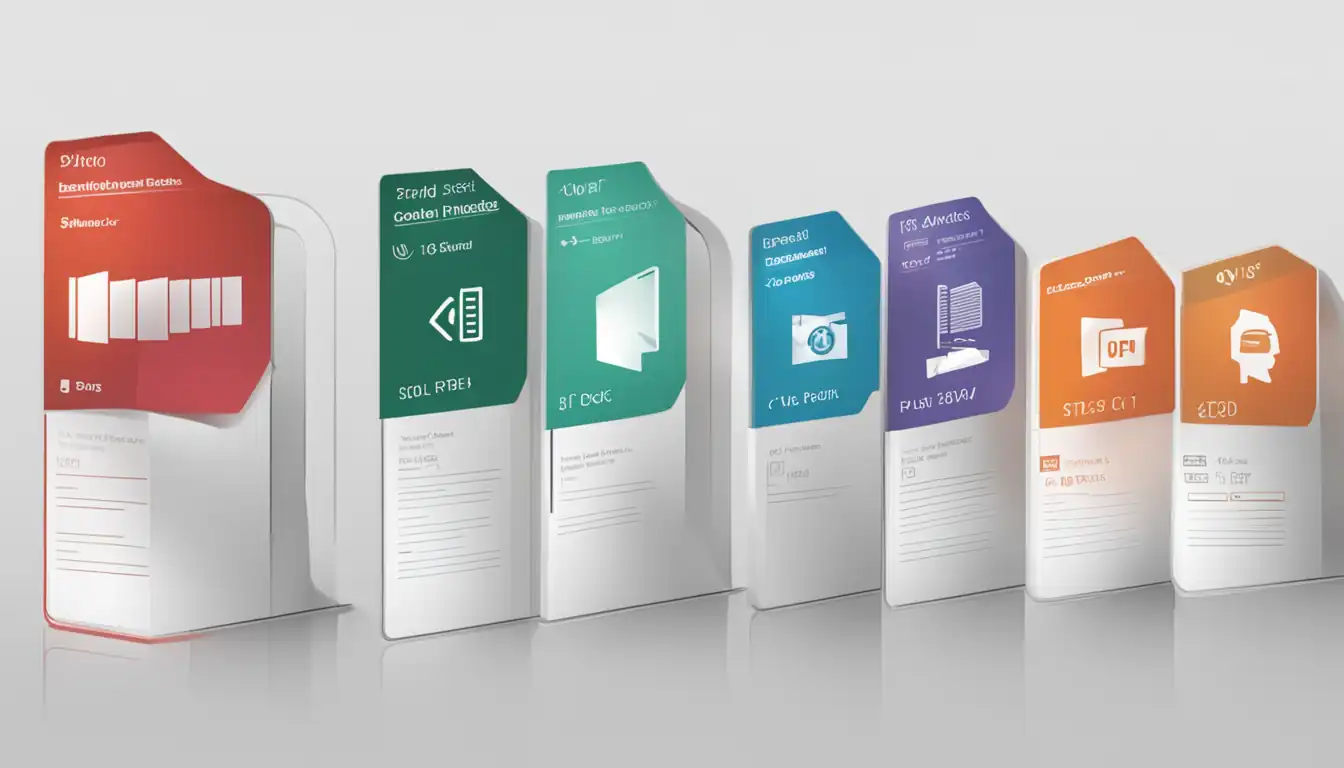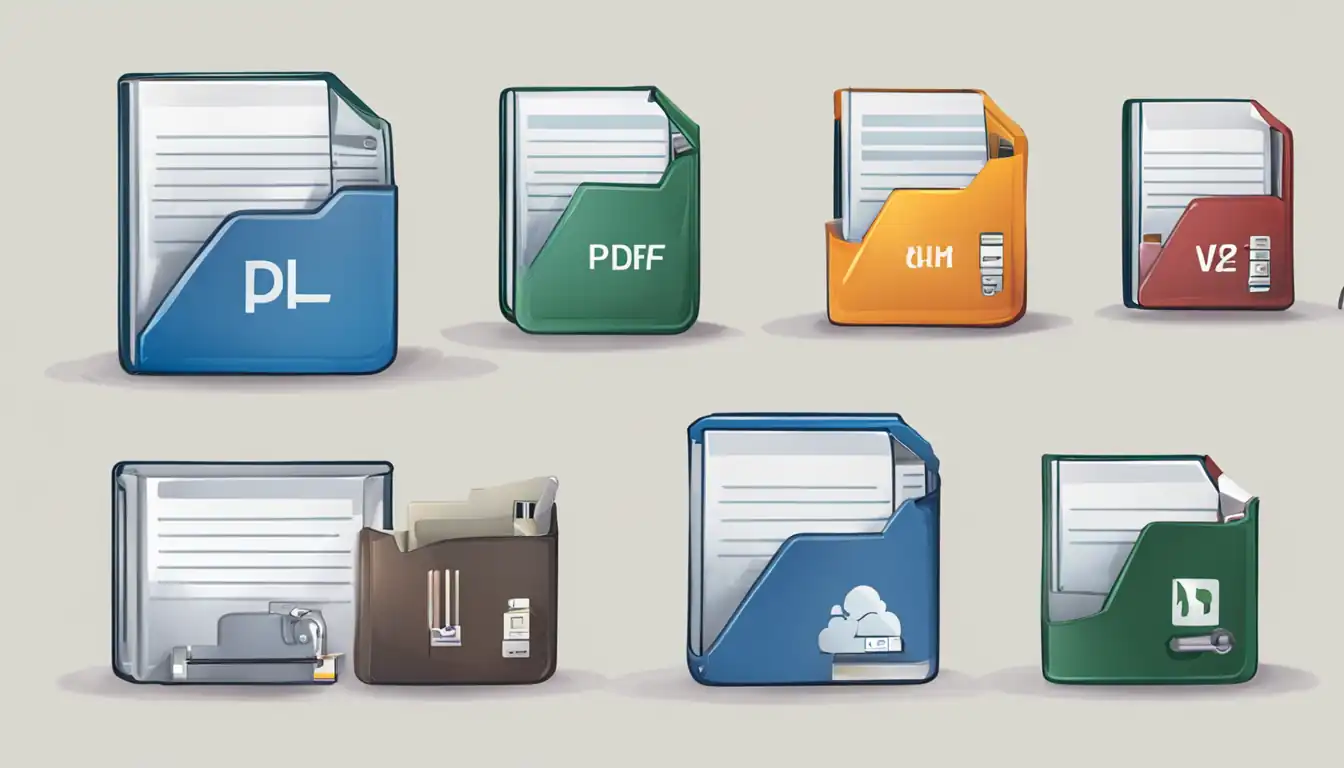Understanding Common File Formats: A Comprehensive Guide

Introduction to File Formats
In the digital world, file formats play a crucial role in storing and organizing various types of information. Whether it's text documents, images, audio files, videos, spreadsheets, or executables, each file format serves a specific purpose. Understanding these formats is essential for efficient data management and compatibility across different platforms.
What Are File Formats?
File formats are standardized ways of organizing and storing data in a file. They define the structure, encoding, and compression techniques used to represent the information. Each file format has its own unique characteristics and is designed to be compatible with specific software applications or devices.
The Importance of Choosing the Right File Format
Choosing the right file format is crucial as it can impact the accessibility, quality, and compatibility of your files. Using an inappropriate format may result in data loss, reduced quality, or compatibility issues when sharing or opening files on different devices or software applications. It is essential to understand the different file formats available and their suitability for specific purposes.
Text-Based File Formats

Text-based file formats are primarily used for storing textual information. They are widely supported and can be opened on various devices and software applications.
Plain Text Files (.txt)
Plain text files are the simplest and most basic file format for storing text. They contain unformatted text and can be opened with any text editor. Plain text files are lightweight and widely compatible, making them ideal for storing and sharing simple textual information.
Rich Text Format (.rtf)
Rich Text Format is a file format that allows for the formatting of text, such as bold, italics, and underlining. It is commonly used for documents that require basic formatting and can be opened with most word processing software.
Portable Document Format (.pdf)
Portable Document Format is a widely used file format for sharing documents that preserves the formatting and layout across different devices and platforms. PDF files can be opened with various software applications, making them an excellent choice for documents that need to be shared or printed.
Microsoft Word Document (.doc and .docx)
Microsoft Word Document is a proprietary file format used by Microsoft Word. It supports advanced formatting options, such as tables, images, and headers. While .doc was the older format, .docx is the newer XML-based format that offers better compatibility and smaller file sizes.
Image File Formats
Image file formats are used for storing and displaying visual content, such as photographs and graphics.
Joint Photographic Experts Group (.jpeg or .jpg)
JPEG is a widely used image file format that offers a good balance between image quality and file size. It supports compression techniques that reduce file size while maintaining acceptable image quality. JPEG files are compatible with most devices and software applications.
Portable Network Graphics (.png)
PNG is a lossless image file format that supports transparency and high-quality images. It is commonly used for web graphics and images that require a transparent background. PNG files are larger in size compared to JPEG but offer better image quality.
Graphics Interchange Format (.gif)
GIF is a file format commonly used for animated images and graphics. It supports a limited color palette and is widely supported across different platforms and software applications. GIF files are often used for simple animations and graphics on websites.
Tagged Image File Format (.tiff)
TIFF is a high-quality image file format commonly used in professional photography and printing. It supports lossless compression and can store multiple layers and color profiles. TIFF files are larger in size but offer excellent image quality and flexibility for editing.
Audio File Formats
Audio file formats are used for storing and playing audio content, such as music or recorded voice.
Waveform Audio File Format (.wav)
WAV is a standard audio file format that provides high-quality, uncompressed audio. It is commonly used in professional audio production and recording. WAV files are larger in size compared to other audio formats but offer excellent sound fidelity.
MP3 Audio Format (.mp3)
MP3 is a popular audio file format that uses lossy compression to reduce file size while maintaining reasonable audio quality. It is widely supported and compatible with most devices and media players. MP3 files are commonly used for music and audio streaming.
Audio Interchange File Format (.aiff)
AIFF is a high-quality audio file format commonly used in professional audio production and recording. It supports uncompressed audio and is widely supported by Macintosh systems and audio editing software. AIFF files are larger in size but offer excellent sound fidelity.
MPEG-4 Audio File (.m4a)
M4A is an audio file format commonly used for storing compressed audio data. It is the default format for iTunes and offers good audio quality with small file sizes. M4A files are widely compatible and can be played on various devices and media players.
Video File Formats

Video file formats are used for storing and playing video content.
Moving Picture Experts Group Format (.mpeg or .mpg)
MPEG is a widely used video file format that offers good video quality and compression. It is compatible with most devices and media players. MPEG files are commonly used for video streaming and distribution.
Audio Video Interleave (.avi)
AVI is a video file format developed by Microsoft. It supports multiple audio and video streams and offers good compatibility with various devices and media players. AVI files can be large in size but provide good video quality.
MP4 Video File (.mp4)
MP4 is a popular video file format that uses compression to reduce file size while maintaining good video quality. It is widely supported and compatible with most devices and media players. MP4 files are commonly used for video streaming and sharing.
QuickTime File Format (.mov)
QuickTime is a video file format developed by Apple. It supports multiple audio and video streams, as well as interactive content. QuickTime files are widely compatible and can be played on various devices and media players.
Spreadsheet and Presentation File Formats
Spreadsheet and presentation file formats are used for organizing and presenting data in a structured manner.
Microsoft Excel Spreadsheet (.xls and .xlsx)
Microsoft Excel Spreadsheet is a widely used file format for organizing and analyzing data in a tabular form. It supports various formulas, functions, and formatting options. While .xls was the older format, .xlsx is the newer XML-based format that offers better compatibility and smaller file sizes.
Microsoft PowerPoint Presentation (.ppt and .pptx)
Microsoft PowerPoint Presentation is a file format used for creating and presenting slideshows. It supports various slide layouts, animations, and multimedia elements. Similar to Excel, .ppt was the older format, and .pptx is the newer XML-based format.
OpenDocument Spreadsheet (.ods)
OpenDocument Spreadsheet is an open-source file format used by software applications like LibreOffice and OpenOffice. It offers similar functionality to Microsoft Excel and can be used as an alternative for spreadsheet files.
OpenDocument Presentation (.odp)
OpenDocument Presentation is an open-source file format used by software applications like LibreOffice and OpenOffice. It offers similar functionality to Microsoft PowerPoint and can be used as an alternative for presentation files.
Compressed File Formats

Compressed file formats are used for reducing the file size of multiple files or folders into a single archive.
Zip File Format (.zip)
ZIP is a widely used compressed file format that combines multiple files or folders into a single archive. It supports compression algorithms that reduce file size and make it easier to share or transfer multiple files.
RAR Archive (.rar)
RAR is a compressed file format that offers higher compression ratios compared to ZIP. It is commonly used for compressing large files or folders into a smaller archive. RAR files require specific software to extract the contents.
7z Compressed Archive (.7z)
7z is an open-source compressed file format that offers high compression ratios and supports various compression algorithms. It is commonly used for compressing large files or folders into a smaller archive. 7z files require specific software to extract the contents.
Tarball Archive (.tar.gz)
Tarball Archive, also known as .tar.gz or .tgz, is a compressed file format commonly used in Unix-based systems. It combines multiple files or folders into a single archive and applies compression using the gzip algorithm. Tarball archives are often used for software distribution and backups.
Executable File Formats

Executable file formats are used for running programs or applications on specific operating systems.
Windows Executable File (.exe)
Windows Executable File is a file format used for running programs or applications on Windows operating systems. It contains the necessary instructions and resources required to execute the program.
macOS Application (.app)
macOS Application is a file format used for running programs or applications on macOS. It contains the necessary instructions and resources required to execute the program.
Linux Executable File (.elf)
Linux Executable File is a file format used for running programs or applications on Linux operating systems. It contains the necessary instructions and resources required to execute the program.
Choosing the Right File Format

When selecting a file format, several factors should be considered to ensure compatibility, accessibility, and quality.
Factors to Consider When Selecting a File Format
- Purpose: Determine the intended use of the file and choose a format that best suits the purpose, whether it's text, image, audio, video, or other types of files.
- Compatibility: Consider the devices and software applications that need to open or use the file. Choose a format that is widely supported across different platforms.
- Accessibility: Ensure that the chosen format can be easily accessed and opened by the intended audience or recipients.
- Quality: Balance the file size and quality requirements. Choose a format that offers an acceptable level of quality while keeping the file size manageable.
Compatibility and Accessibility
It is essential to choose a file format that can be opened and used by the intended recipients or devices. Consider the operating systems, software applications, and devices that will be used to access the file. Opt for widely supported formats to ensure maximum compatibility and accessibility.
Quality and File Size
The quality and file size of a file format can significantly impact its usability and storage requirements. Consider the desired level of quality and the available storage capacity. For example, if high-quality images are required, formats like TIFF or PNG may be more suitable, but they will result in larger file sizes compared to JPEG.
Conclusion
Understanding common file formats is essential for effective data management and compatibility across different platforms. Whether it's text, images, audio, video, spreadsheets, or executables, each file format serves a specific purpose and has its own unique characteristics. By choosing the right file format, you can ensure accessibility, compatibility, and quality for your files.
Recap of Common File Formats
- Text-Based File Formats: .txt, .rtf, .pdf, .doc, .docx
- Image File Formats: .jpeg, .jpg, .png, .gif, .tiff
- Audio File Formats: .wav, .mp3, .aiff, .m4a
- Video File Formats: .mpeg, .mpg, .avi, .mp4, .mov
- Spreadsheet and Presentation File Formats: .xls, .xlsx, .ppt, .pptx, .ods, .odp
- Compressed File Formats: .zip, .rar, .7z, .tar.gz
- Executable File Formats: .exe, .app, .elf
Final Thoughts on File Format Selection
When choosing a file format, consider the purpose, compatibility, accessibility, quality, and file size requirements. By selecting the appropriate format, you can ensure that your files are easily accessible, compatible with different devices and software applications, and maintain the desired level of quality.